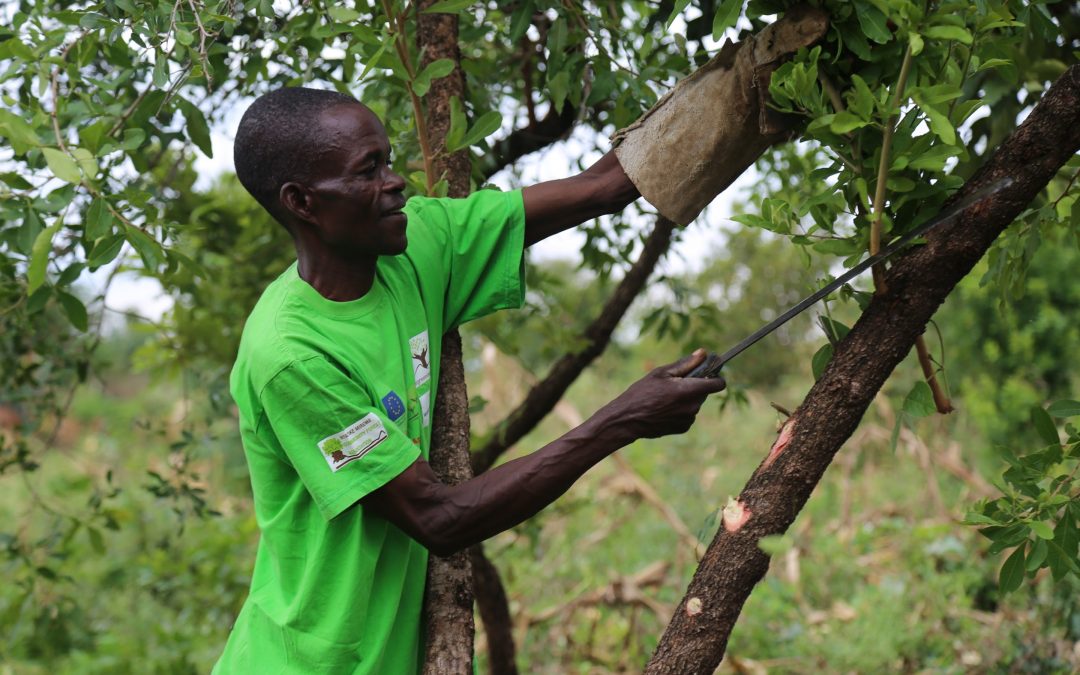Farmer-Managed Natural Regeneration experts call for the creation of a movement to expand the scale of the approach in Kenya.
By: Tengetile Zanele Mphila-Nguru and Sarah McKenzie
A farmer-managed natural regeneration (FMNR) webinar was held 25 March 2021 to begin a bigger conversation on FMNR that will take place during the Kenya Landscape Restoration Scaling Conference: Catalysing Action for Landscape Restoration, 9–16 July 2021. The experts shared information about FMNR in Kenya and how the indigenous practice is rooted in the country.
Sarah McKenzie from World Vision Australia started off the conversation by discussing FMNR and how it originated as a practice.
“FMNR is an indigenous practice which was reinvigorated by Tony Rinaudo. It is a systematic pruning of sprouting tree stumps to encourage their growth into mature trees.”
The discussions revolved around the evolution of FMNR in Kenya from an indigenous practice to a movement for restoring livelihoods, food security, social cohesion and landscapes across the country. The speakers were drawn from various institutions in Kenya as well as community members who implement FMNR.
World Vision Kenya, together with communities and Government, has used FMNR and other restoration practices to contribute to the commitments that the Government of Kenya made to increase tree cover to 10% and restore 5.1 million hectares of deforested and degraded landscapes by 2030.
Contributing to the target, “World Vision is aiming to restore 120,000 hectares of degraded land in Kenya using FMNR and integrating other restoration practices,” said Charles Okech Odhiambo of World Vision Kenya.
The speakers proposed the creation of an FMNR movement in the country where all involved can share information to build momentum. This idea was also stimulated by the participants of the webinar who mentioned that it will help the organizations working on FMNR to network and synergize their efforts as they upscale to different parts of Kenya where FMNR has not yet been introduced.
“There is a need to build a movement and have a conversation that begins from the community, the county level and then to the national level and see how these processes can be connected and linked to the National Biosafety Committee, targets of land restoration and targets of biodiversity and which have collective monitoring approaches across the country,” said Jonathan Muriuki, Kenya country representative, World Agroforestry (ICRAF).
Together, the speakers laid out the crucial ingredients for creating a national FMNR movement.
- The community: all members of communities are involved, including women, youth, people with disabilities and any marginalized groups. For example, if some members of a community don’t own land, make sure they are able to practise and benefit from FMNR on communal land.
- Research organizations: an evidence-based FMNR movement to understand the social, environmental and economic barriers and enablers.
- Education: the next generation of forestry, agricultural and environmental experts have FMNR in their toolbox. This includes everyone from school to university.
- Government: FMNR is prioritized and budgeted for and there are policies and laws that protect trees and the environment.
- Non-governmental, community-based and other social organizations: people already working with communities know they can use FMNR as part of their environmental restoration programming.
- Mass communication: FMNR is on the airwaves, televisions and telephones of people who haven’t already been reached by other methods.
Forums such as the Kenya Landscape Restoration Scaling Conference bring these parts together. Continuous monitoring, evaluation and lessons learned will refine the direction and substance of the movement. It may get messy but it will be worth it. The result will be a thriving environment that will benefit all communities and future generations. With the creation of this movement, farmers and others will interact more and enhance their capacity for expanding the scale of FMNR in Kenya.
Participants included Festus Chirchir, manager of the Central Rift Farmer-Managed Natural Regeneration Scale up Project; World Vision Kenya; Jonathan Muriuki, country representative, World Agroforestry; Charles Okech Odhiambo, World Vision Kenya; Peter Olimo, FMNR practitioner and farmer; Milton Oboka, Youth FMNR Champion; Simon Choge, Centre Director, Kenya Forestry Research Institute as well as Carol Munini, FMNR Champion, Moi University.
This story was produced with the financial support of the European Union. Its contents are the sole responsibility of Regreening Africa and do not necessarily reflect the views of the European Union.

